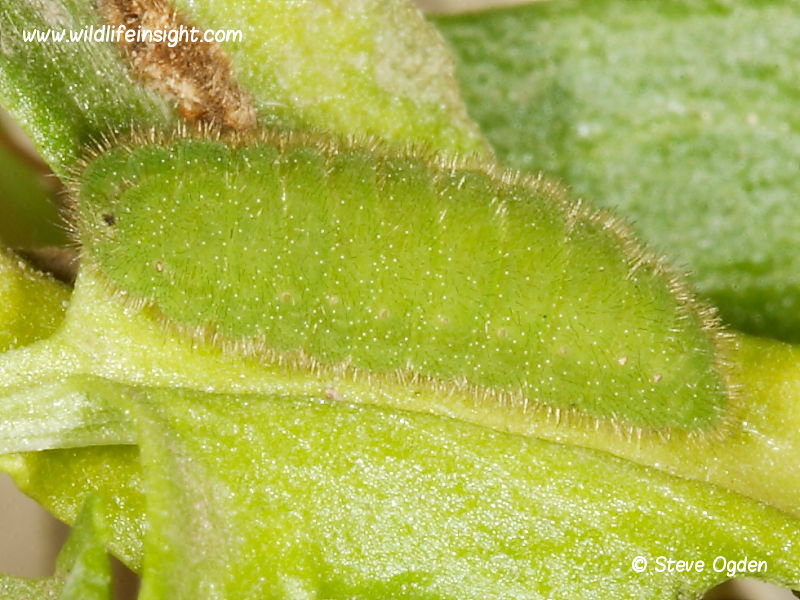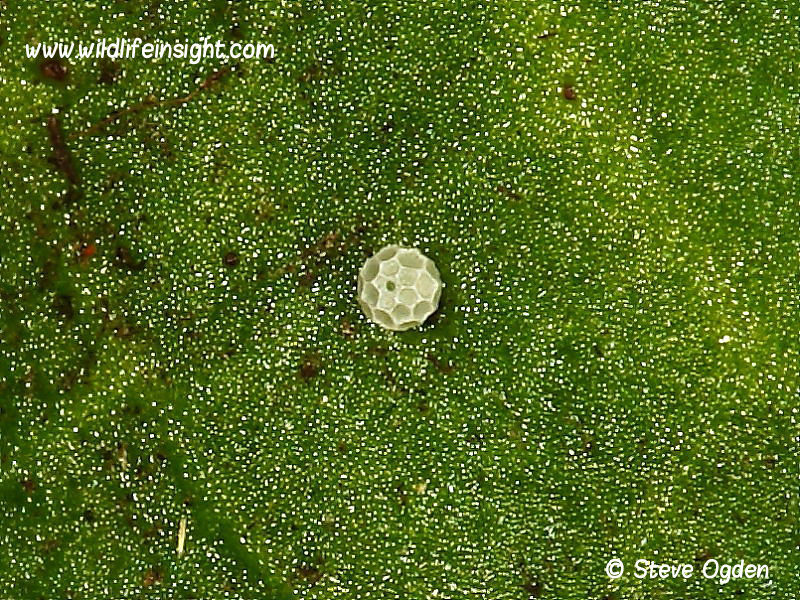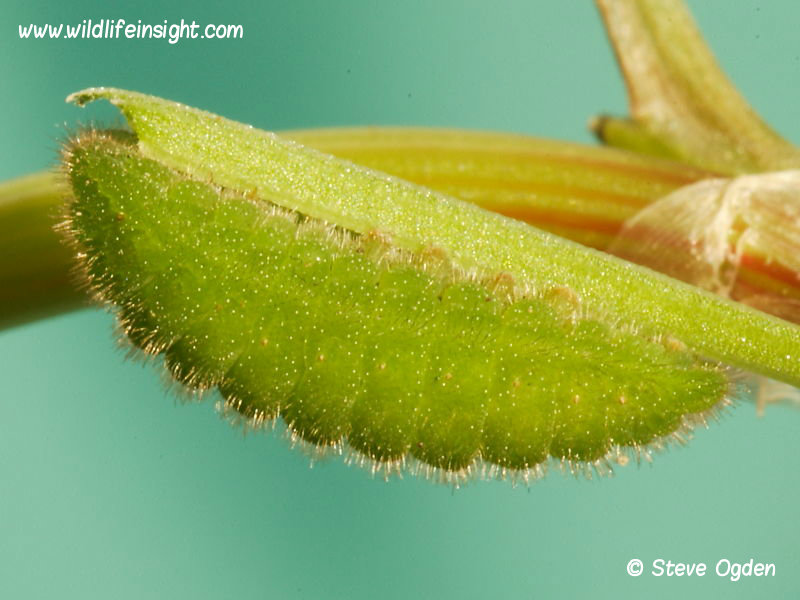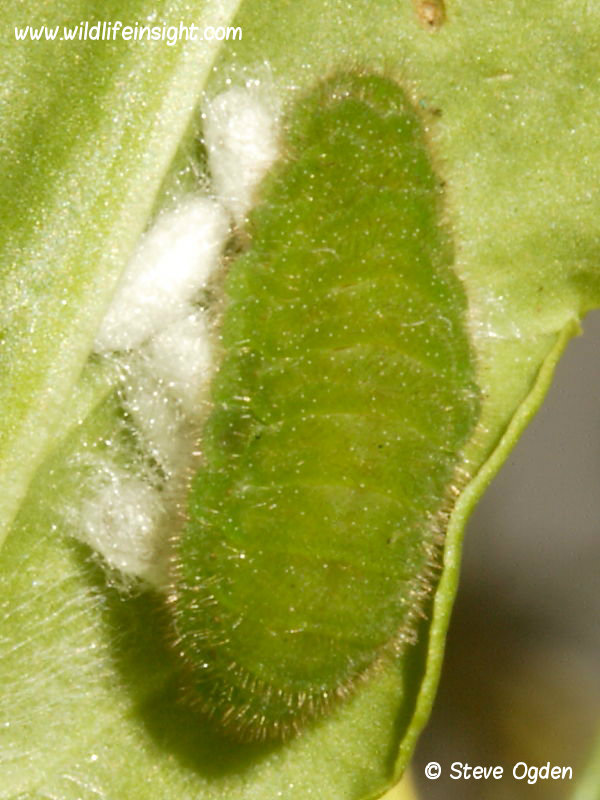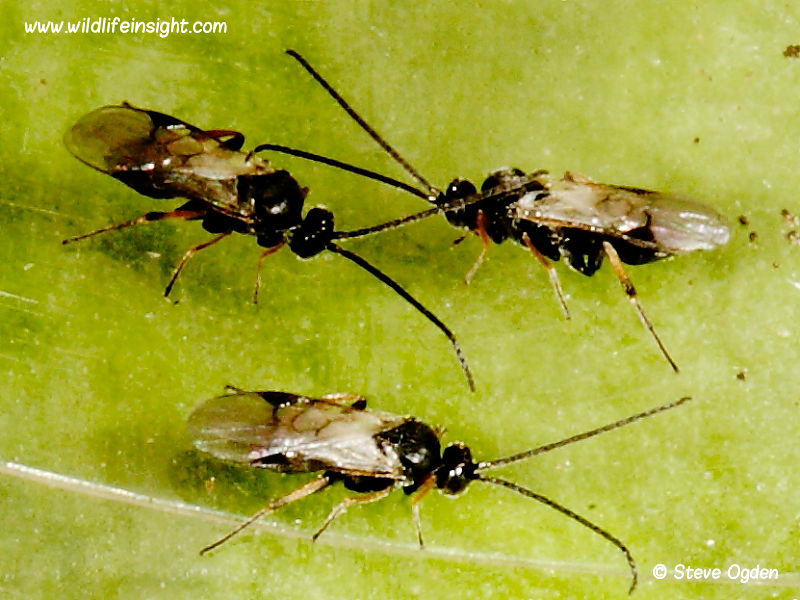The Small Copper Butterfly (Lycaena phlaeas)
This little butterfly is commonly found in small numbers in a wide variety of sunny open habitats such as woodland rides, hills, commons and grassy coastal cliff tops.
Small numbers may also be attracted into gardens to nectar on a variety of flowering plants.
The males are restless, highly territorial and easily disturbed.
Both males and females are often seen basking on bare ground and nectaring on a wide variety of flowers such as knotgrass, fleabane, dandelion, buddleias and heathers.
During good summers in the British Isles there may be as many as three generations between April and October, with the last generation overwintering as a caterpillar.
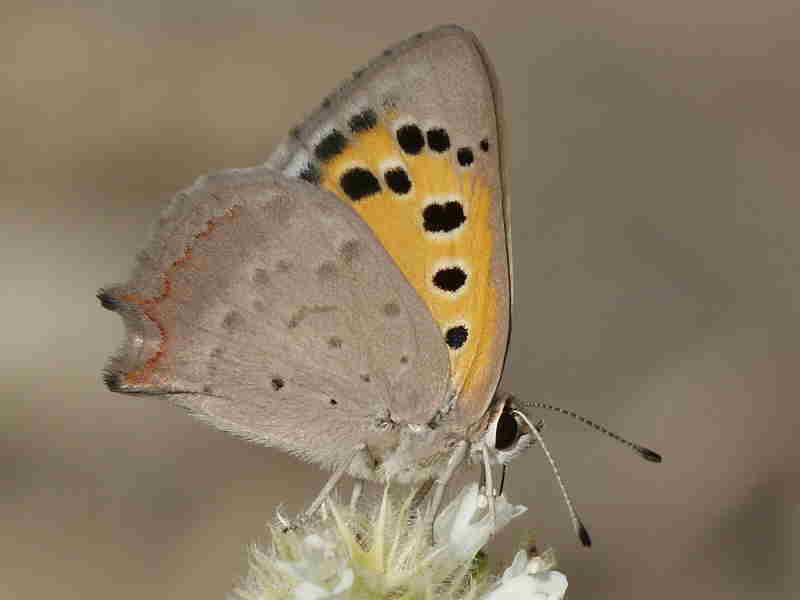
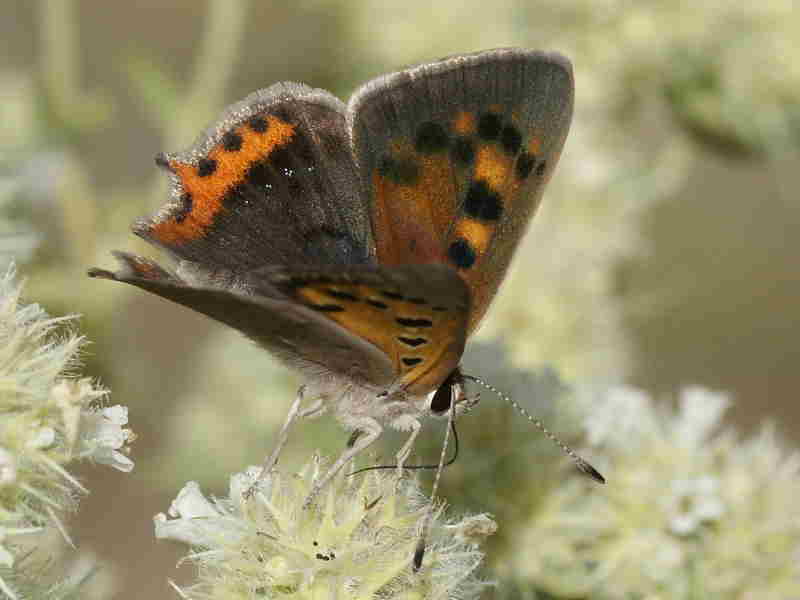
The species is also found throughout the European continent where its extensive range extends as far north as northern Scandinavia, eastwards into Asia and as far south as North Africa.
Other Spanish and European butterflies are featured in the European Butterfly galleries.
Identification of the Small Copper butterfly
The Small Copper butterfly is unlikely to be mistaken for any other butterfly species in the UK.
Wingspan ranges between 30 – 35mm with females slightly larger and with more rounded forewing tips than the males.
Other similar ‘Copper species’ are featured in the European butterfly gallery.
Aberrations and forms of Small Copper butterfly
Variations/aberrations are common and most frequently occur as changes in shading and extent of the black markings.
The form caeruleopunctata is a particularly attractive and frequent form having a row of small, blue spots just inside the outer orange band on the hindwing.
An albino or white form of Small Copper Butterfly occurs less frequently.
The white form featured was seen nectaring on a variety of late flowering plants on The Lizard in South West Cornwall.
The unusual white form with blue extending out from the base of the wing was photographed by Ted Benham in Wiltshire, UK.
Butterflies commonly seen in gardens in the British Isles are –
The Small Tortoiseshell Butterfly, The Peacock Butterfly,
The Painted Lady Butterfly, Comma Butterfly, The Red Admiral Butterfly, The Large White Butterfly, Small White Butterfly and Green-veined Butterfly
Butterflies more likely to be seen in more open countryside and woodland can be seen in the Butterfly Galleries
The Small Copper Butterfly caterpillar (Lycaena phlaeas)
Having three generations a year, with the final one overwintering as a caterpillar, the larvae may be found in any month of the year.
The fully grown, slug shaped caterpillars are 15mm long and dotted with tiny white pinacula from which sprout a single short hair.
Two main caterpillar colour forms commonly occur – a green form and a green and pink striped form.
More Butterfly caterpillars are featured in the gallery of – British butterfly caterpillars
Other caterpillars are featured in the galleries of Moth caterpillars.
Single eggs, .6 mm in size and resembling miniature golf balls, are laid singly on the upper side of a leaf of the larval foodplant.
The larval foodplants are Common Sorrel, Rumex acetosa, Sheeps Sorrel, Rumex acetosella and less frequently docks (Rumex).
The egg featured was laid on Common Sorrel on the grassy cliff top at Predannack on the Lizard in south west Cornwall.
In September 2020 unusually large numbers of Small Copper butterflies were recorded on this site, with one seen every 3 or 4 metres over a narrow, 200 metre strip of grassland.
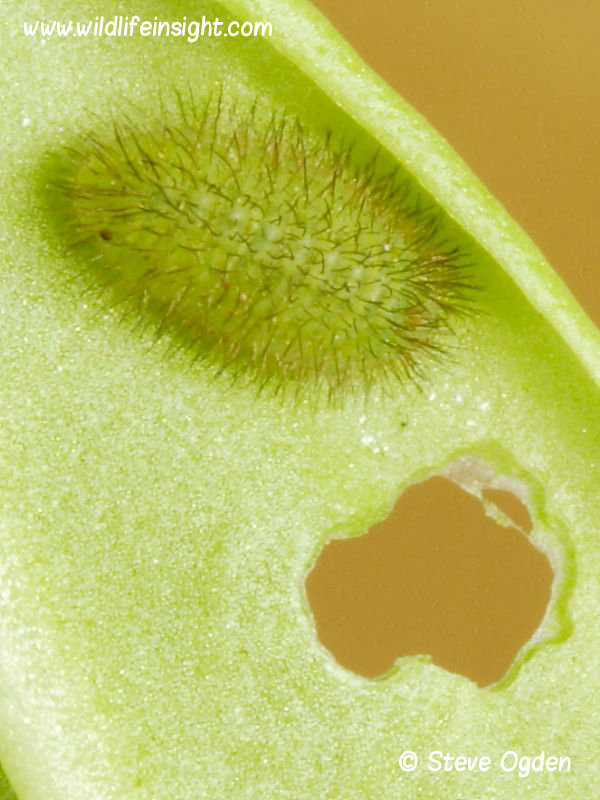
The caterpillars are often located on the underside of the leaf aligned alongside the central vein.
After a month the caterpillars are c 15 mm long and fully grown.
Late broods overwinter for over 6 months as a caterpillar, attached low down amongst the larval foodplant by a silken pad.
Pupation takes place close to the ground, commonly beneath a leaf or stem of the larval foodplant.
The 10 mm, pale brown chrysalis is attached by a silk girdle and pad. The butterfly emerges within 3/4 weeks according to temperature.
The Small Copper Butterfly parasites (Lycaena phlaeas)
The caterpillars of the Small Copper Butterfly are heavily parasitised.
The parasitised caterpillar featured was swept from Sheep’s Sorrel in the Autumn beside a cliff path in south west Cornwall and reared on.
Those overwintering larvae seem to be particularly vulnerable, perhaps due to the extended length of time spent at this stage of the butterflies life cycle.
Recommended Butterfly Books
- Pocket Guide to the Butterflies of Great Britain and Ireland – Richard Lewington.
- The Cornwall Butterfly Atlas – Watcher, Worth and Spalding.
- The Complete Guide to British butterflies – Margaret Brooks and Charles Knight.
- Collins Butterfly Guide of Britain and Europe – Tolman and Lewington.
